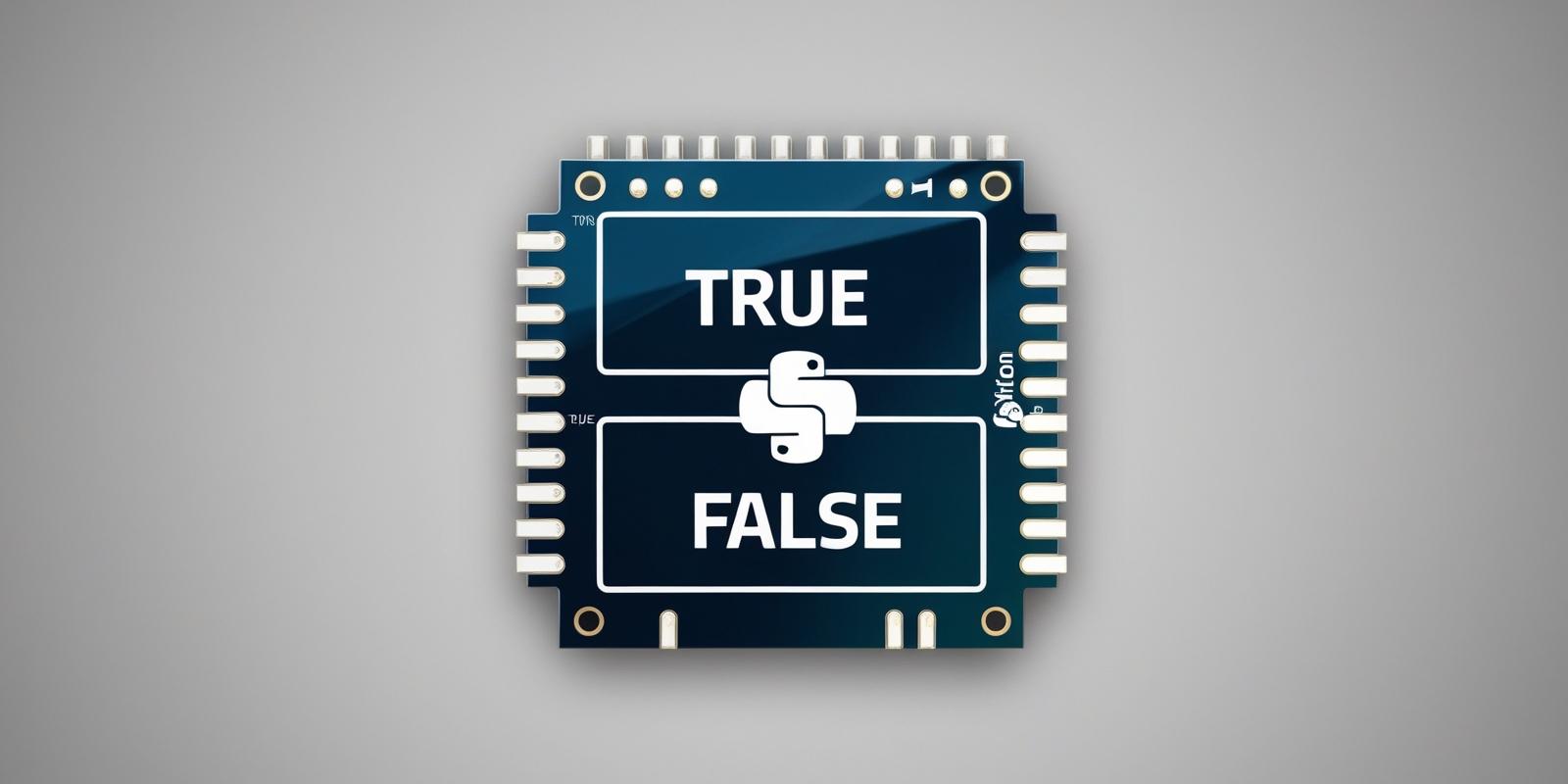A boolean in Python is a data type with only two possible values: True and False. These values are often the result of comparison or logical operations and are used to control the flow of programs.
is_python_fun = True
is_raining = False
print(type(is_python_fun)) # Output: <class 'bool'>
print(type(is_raining)) # Output: <class 'bool'>
The bool type in Python is a subclass of the integer type, which means True is equivalent to 1 and False is equivalent to 0.
print(True == 1) # Output: True
print(False == 0) # Output: True
print(True + True) # Output: 2
Boolean Context: Truthy and Falsy Values
In Python, values are evaluated as either "truthy" or "falsy" in boolean contexts, such as conditional statements.
Falsy Values
The following values are considered falsy in Python:
NoneFalse0(any numeric type:0,0.0,0j, etc.)- Empty sequences or collections:
'',(),[],{},set() - Objects of custom classes with
__bool__()or__len__()returningFalse
print(bool(0)) # Output: False
print(bool('')) # Output: False
print(bool([])) # Output: False
print(bool(None)) # Output: False
Truthy Values
All values that are not falsy are truthy.
print(bool(42)) # Output: True
print(bool('Python')) # Output: True
print(bool([1, 2, 3])) # Output: True
Boolean Operations in Python
Python provides three logical operators to perform boolean operations:
1. and
The and operator returns True if both operands are truthy.
result = True and False
print(result) # Output: False
result = True and bool(2)
print(result) # Output: True
2. or
The or operator returns True if at least one operand is truthy.
result = True or False
print(result) # Output: True
3. not
The not operator negates a boolean value.
result = not True
print(result) # Output: False
result = not False
print(result) # Output: True
Boolean Expressions and Comparison Operators
Comparison operators often produce boolean results and are frequently used in conditional expressions.
Comparison Operators
| Operator | Description | Example |
|---|---|---|
== |
Equal to | 5 == 5 → True |
!= |
Not equal to | 5 != 4 → True |
> |
Greater than | 5 > 3 → True |
< |
Less than | 3 < 5 → True |
>= |
Greater than or equal to | 5 >= 5 → True |
<= |
Less than or equal to | 4 <= 5 → True |
x = 10
y = 20
print(x < y) # Output: True
print(x == y) # Output: False
Combining Comparisons
Python allows chaining comparison operators for cleaner expressions:
x = 10
print(5 < x < 15) # Output: True
Using Booleans in Conditional Statements
Booleans are commonly used in conditional statements to control program flow.
age = 20
if age >= 18:
print("You are an adult.")
else:
print("You are a minor.")
Output:
You are an adult.
Practical Use Cases for Booleans
1. Default Arguments in Functions
Booleans are often used as default arguments for function parameters.
def greet(name: str, excited: bool = False) -> str:
if excited:
return f"Hello, {name}!!!"
return f"Hello, {name}."
print(greet("Alice")) # Output: Hello, Alice.
print(greet("Alice", True)) # Output: Hello, Alice!!!
2. Filtering Data
Booleans can be used to filter collections using filter():
from typing import List
numbers: List[int] = [0, 1, 2, 3, 4, 5]
filtered = list(filter(lambda x: x % 2 == 0, numbers))
print(filtered) # Output: [0, 2, 4]
3. Assertions for Validation
Booleans are crucial for validating conditions using assert.
def divide(a: int, b: int) -> float:
assert b != 0, "Division by zero is not allowed."
return a / b
print(divide(10, 2)) # Output: 5.0
# print(divide(10, 0)) # Raises AssertionError
Common Pitfalls with Booleans
-
Avoid Using
isfor Comparisons- Use
==instead ofisfor comparing boolean values.
print(True == 1) # Output: True print(True is 1) # Output: False - Use
-
Truthiness of Empty Objects
- Be cautious with empty objects, as they evaluate to
Falseeven if not explicitly a boolean.
print(bool([])) # Output: False - Be cautious with empty objects, as they evaluate to
Conclusion
Booleans in Python are more than just True and False. They form the foundation of control flow and logical operations, enabling powerful and expressive programming. By understanding how truthy and falsy values work, mastering boolean operations, and avoiding common pitfalls, you can write cleaner, more efficient Python code.









